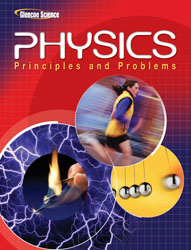1 A) release point B) height C) reference level D) initial position 2 A) the reference level B) gravitational potential energy C) elastic potential energy D) mechanical energy 3 A) 14.3 J B) 46.8 J C) 93.1 J D) -46.8 J 4 A) -3.7×104 J B) 1.8×104 J C) -5.5×104 J D) 3.7×104 J 5 A) reference levels B) kinetic energy C) resistance D) potential energy 6 A) 3.7×104 J B) 1.8×104 J C) -1.8×104 J D) -3.7×104 J 7 A) PE g = Fd B) PE g = 1/2mv 2 C) PE g = mgh D) PE g = E + KE 8 A) 3.9×103 J B) 3.9×104 J C) 6.1×104 J D) 4.1×104 J 9 In the figure below, case 3, if v i were doubled, how would the magnitude of the final velocity be affected?
<a onClick="window.open('/olcweb/cgi/pluginpop.cgi?it=jpg::::/sites/dl/free/0078807220/617919/lz.JPG','popWin', 'width=NaN,height=NaN,resizable,scrollbars');" href="#"><img valign="absmiddle" height="16" width="16" border="0" src="/olcweb/styles/shared/linkicons/image.gif"> (20.0K)</a> A) It wouldn't change. B) It would be halved. C) It would be quadrupled. D) It would be doubled. 10 A) It wouldn't change. B) It would be doubled. C) It would be quadrupled. D) It would be halved. 11 In the figure below, if cart D were given an initial velocity of 1 m/s to the left, what would the final velocities of each cart be?
<a onClick="window.open('/olcweb/cgi/pluginpop.cgi?it=jpg::::/sites/dl/free/0078807220/617919/ma.JPG','popWin', 'width=NaN,height=NaN,resizable,scrollbars');" href="#"><img valign="absmiddle" height="16" width="16" border="0" src="/olcweb/styles/shared/linkicons/image.gif"> (12.0K)</a> A) cart C, 2 m/s to the left; cart D, 1 m/s to the left B) cart C, 0 m/s; cart D, 0 m/s C) cart C, 1 m/s to the left; cart D, 1 m/s to the right D) cart C, 0 m/s; cart D, 2 m/s to the right 12 A) 9.1 m/s B) 13 m/s C) 20 m/s D) 18 m/s 13 A) 1.6 m B) 4.1 m C) 3.7 m D) 0.62 m 14 A) 12.5 m/s B) 12.1 m/s C) 10.8 m/s D) 7.67 m/s 15 A) 7.06×102 J B) -7.06×103 J C) -7.06×102 J D) 7.06×103 J 16 A) inelastic collision B) energy conservation C) elastic collision D) mechanical collision 17 A) reference energy B) conserved energy C) momentum D) mechanical energy 18 A) PE g = E + KE B) M E = 1/2 (KE )(PE g )2 C) PE g = mgh D) E = KE + PE g 19 A) 1.2×103 J B) 3.1×103 J C) 4.7×102 J D) 2.6×103 J 20 A) in a closed, isolated system, the total amount of energy is constant B) the total amount of energy in any system is the sum of its kinetic and gravitational potential energies C) if a system is isolated from external forces, then the total amount of energy is constant D) the total amount of energy in any system is its mechanical energy














